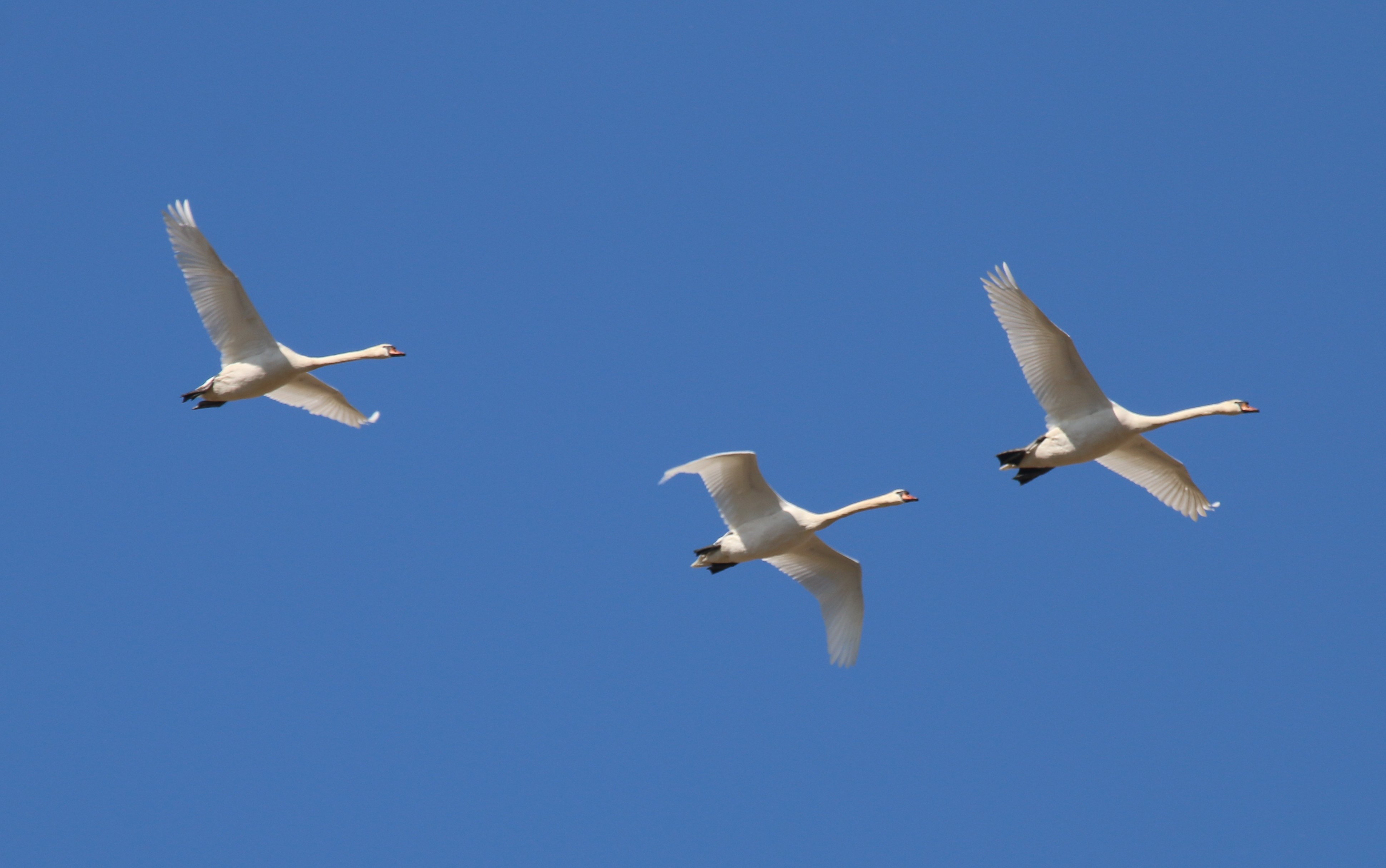
[The Mute Swan, pictured above, is amongst the heaviest birds capable of flight and therefore a fine introduction to this post. Other than that, it’s got nothing to do with it.]
.
It was recently brought to my attention that identifying birds is easy when the birds look like we tell them to, but not so easy when the birds don’t: I was scanning a few ponds when a fly-by trio of ducks caused me excitement, concern, and to write this post. The group comprised of two colourful and one drab bird, presumably two males and a female, and the males were easily identified as Garganeys, the coolest dabblers of the planet. I’m willing to write arguably the coolest because we could argue about it and I’d win. Anyway, so the two males were flying on both sides of the brown bird, which I wanted to quickly confirm as a female Garganey by checking the head pattern. Problem was: it wasn’t a female Garganey. Now, having the female-thing fly in between two Garganeys made it easy to be sure it was of the exact same size, and there are only two species of dabbling duck the size of a Garganey in Germany: the Teal and – well – the Garganey. So I checked again and clearly the very pale and almost featureless head dictated it was neither a Teal nor a Garganey.
What now?
Increase adrenaline and switch to vagrant mode!
You see, there is one other species of dabbling duck in Europe that’s about the size of a Garganey and that shows a very pale head: the Marbled Teal. Now, you need to understand that the Marbled Teal is so rare here that German birders aren’t even allowed to mention its name in front of others for fear of compulsive chaotic reactions that may cause harm to innocent civilians. Also, the bird in question lacked the dark mask of the Marbled Teal, but amongst the three options of small dabblers, Marbled Teal was clearly the one fitting the least bad.
What to do?
Okay, the bird in question was half concealed by the Garganey in front of it and it lacked a dark eye mask. Had it flown out of sight, I would have dismissed it as a “possible” Marbled, with honorable mention in my book on the ones that got away. Possibly I would have checked my year list total and compared it to Corey’s, and then contemplated putting it on the list but not reporting it to any records committee. No harm done and smiling faces all around. However, the bird landet in plain sight of me. I trimmed my scope on it, focussed and *boom* a classic male Gadwall. What?!? Luckily I immediately exchanged my lens-to-scope adapter for the camera and took a few pictures of the bird as it flew away with a pair of Mallards. You can see three things on the pictures below:
- The bird is really, really small
- The bird is a male Gadwall
- I am not making this up
.
I was thrown into complete confusion. I mean, the Gadwall is one of the most common ducks in Germany. How on earth could I have not immediately recognized it? And just how large is the Gadwall anyway? I had always thought it was roughly the size of a Mallard. Had I been so mistaken? After thirty years and thousands of Gadwall encounters, often in the company of Mallards? Turns out I hadn’t been mistaken, as the respective size of the three species clearly shows:
Mallard – 50 to 60 cm
Gadwall – 46 to 56 cm (essentially the same, just a tad smaller)
Garganey – 37 to 41 cm
Officially, there isn’t even any overlap between a Gadwall and a Garganey. Which makes me very happy as it means that I have had every right to be confused, and that I have also likely seen the smallest Gadwall ever recorded in living history. Of course this sadly does not equal eternal fame and fortunes as I have no proof to back it up other than the pictures above, but I’m okay with that. [It can’t be denied though that there are days when I do question the advantage of a scope over a shotgun, and on these days I often think that I can hear Audubon giggle from his grave.]
Now we might be happy about a post on a really small Gadwall and continue with our lives, but there’s more: the lesson learned. What I learned from this confusing encounter is that bird identification and gravel mining are essentially the same thing. Because in both processes, the raw material is run through a system of increasingly fine-meshed sieves for the finest results.
.
This machine may be a better birder than most of us
.
I give you an example. You are in North America and spot something flying.
“It’s a bird!” – 810 species
“It’s a dabbling duck!” – 16 species
“It’s really small!” – 3 species
In just two steps, we’ve gone from 800 to just 3 species. And very often – as in the example above and during my encounter – the bird’s size is one of the first sieves we run our mystery bird through. Therefore, an exact assessment of the bird’s size is vital for a correct identification, and any mistake whatsoever at this level – be it due to a mistaken observer or a bird that’s smaller than it is allowed to be – is bound to throw us off the track and over the edge. Because these first rough sieves are our means of eliminating vast quantities of species to narrow down our options. And once a species is eliminated by mistake, it is nearly impossible to return it into the identification process.
This is why birders (and possibly Roland Emmerich) know best: Size Matters!
And don’t worry, I have not forgotten my audience. Here – finally – is a picture of a few fine male Garganeys. See? No need to argue.

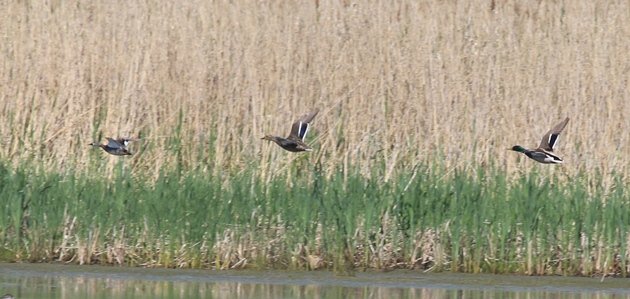
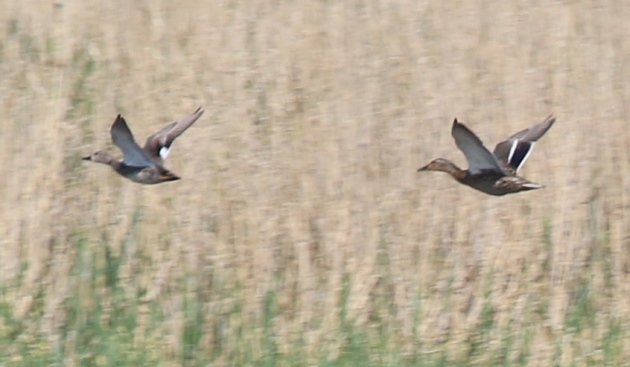
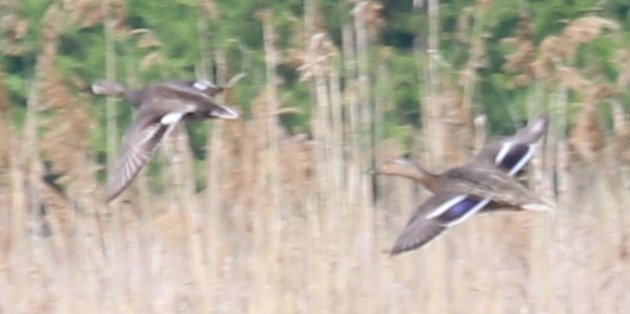

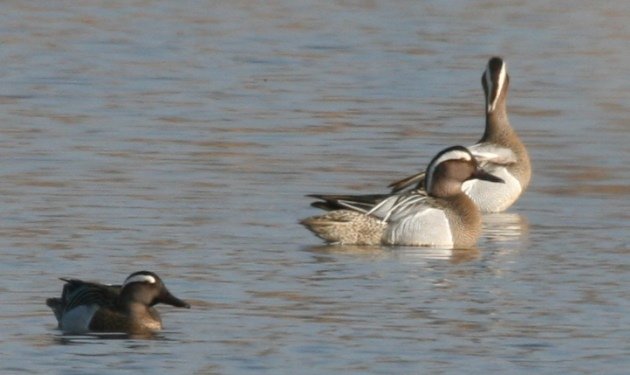










Leave a Comment